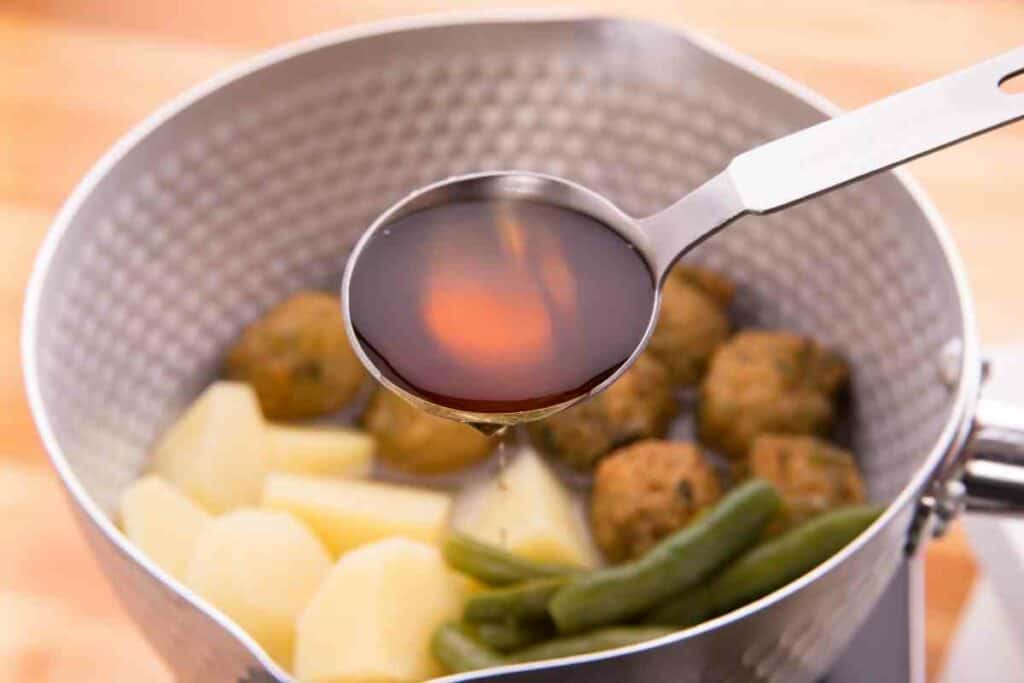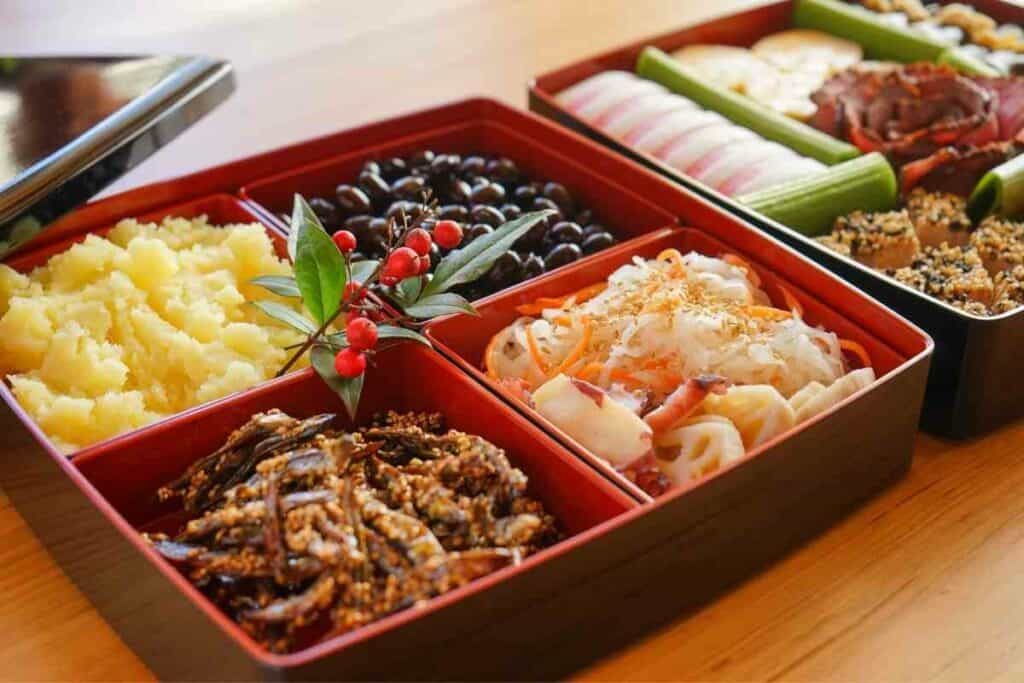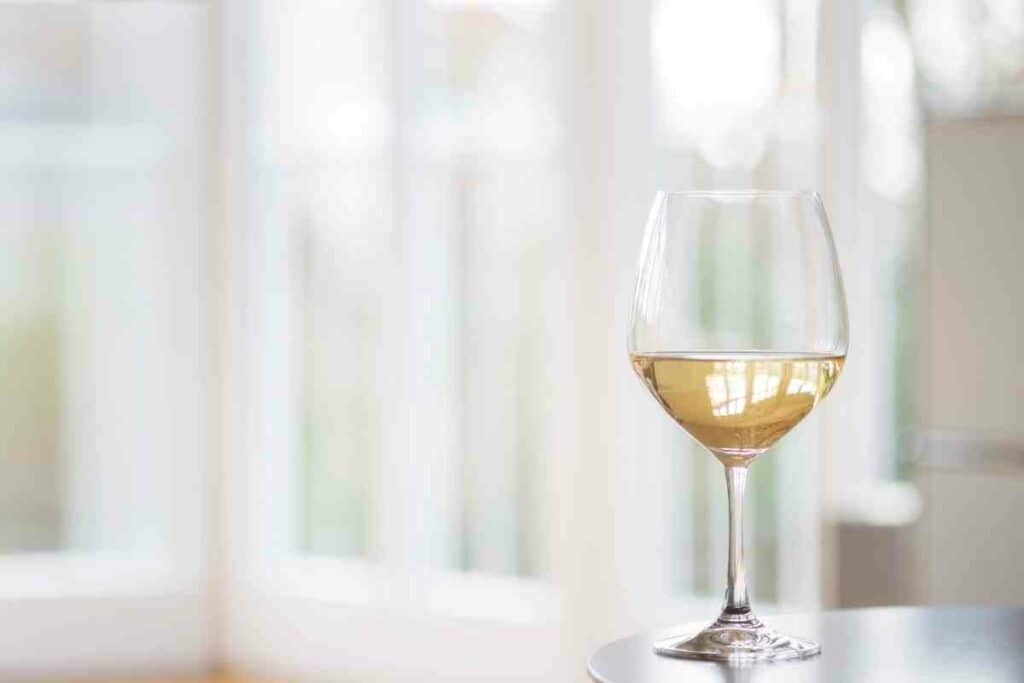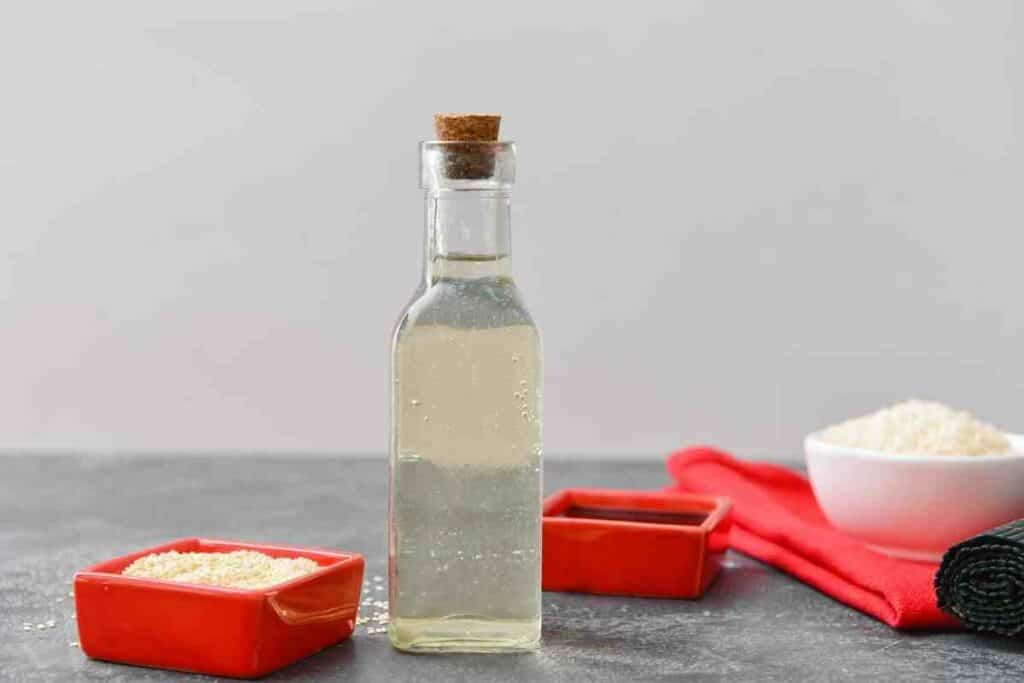If you’re interested in Japanese cuisine, you’ve probably encountered the aji mirin vs. hon mirin debate.
With many mirin types available in the market, it’s easy to choose the wrong one and destroy your dish.

So, what’s the difference between aji mirin and hon mirin?
Table of Contents
What is Aji Mirin?
Aji mirin is an artificial, mirin-like substitute for hon mirin (true mirin).
Because of the latter’s intricate production process, aji mirin is more available worldwide. Therefore, you will easily find it outside of Japan on most supermarket shelves.
[lasso type=”table” id=”58″ link_id=”7488″]
Aji mirin is understandably cheaper than hon mirin. However, despite its affordability, most Japanese people don’t like it.
Instead, they’d rather use hon mirin because aji mirin has an artificial aroma that tastes like chemicals.
Although they have similar tastes, aji mirin and hon mirin have different ingredients and production methods.
In Addition – Aji mirin contains additives like corn syrup, salt, and sugar.
Aji mirin is called ‘mirin-fu chomiryo,’ which translates to mirin-like seasoning.
Others call it ‘shio mirin,’; meaning new mirin. Such names underpin the inauthenticity of aji mirin and explain why many purists disregard it as ‘mirin-flavored corn syrup.’
Nevertheless, aji mirin is a more than adequate substitute for mirin. Its taste is the closest you can get to authentic mirin, which can be hard to access outside Japan.

Moreover, aji mirin has lower alcohol content than hon mirin.
So if you don’t like alcohol’s sour taste, you can cook with aji mirin. Less alcohol also means aji mirin is less flammable.
However, reduced alcohol content makes aji mirin more susceptible to going bad. For this reason, it’s wise to keep it refrigerated, especially after opening the bottle.
More importantly, you must exhaust the product within three months after opening.
What is Hon Mirin?
Hon mirin is popularly known as true mirin, and deservedly so.
It’s the epitome of authenticity and natural products, two key elements of Japanese culinary culture.
Hon mirin contains glutinous rice, koji (fermentation catalyst), and shochu (distilled beverage) – if it has anything apart from these, it’s not mirin.
As mentioned above, accessing hon mirin outside Japan isn’t easy. Therefore, if you live overseas, the best way to access this beverage is to purchase it online.
Alternatively, you can get it at specialty Asian cuisine grocery stores.
Hon mirin has a relatively high alcohol content, ranging between 10% and 15%. However, since it doesn’t contain artificial additives, you can consume it as an alcoholic beverage.
Its purity reduces the chance of getting a hangover unless you consume large amounts quickly. On the contrary, you can’t drink aji mirin because of the additives.
Which is Better for Cooking?
Like most specialist cuisines, Japanese dishes are keen on details.
Due to this, you should be careful when choosing the mirin to ensure you get the desired taste.
Adding hon mirin to your recipe gives the food a distinctive sweet taste with a tinge of sourness because of the alcohol. Remember, hon mirin doesn’t contain artificial sweeteners.

It’s the alcohol that contributes to the unique taste:
- First, it subdues fish and canned foods’ strong flavors and aromas.
- It also tenderizes meats and accentuates the flavors of other ingredients.
On the other hand, aji mirin isn’t as effective in subduing pungent smells due to its low alcohol content.
Moreover, aji mirin doesn’t add the famous umami flavor to dishes because it doesn’t undergo natural fermentation.
How Do You Tell the Difference?
Always check the nutrition label before purchasing mirin from a supermarket or an online store.
For Example – If the product has only three ingredients, koji, glutinous rice, and shochu, it’s hon mirin.
Aji mirin is a label that includes fermented rice seasoning, high fructose corn syrup, vinegar, sodium benzoate, and water.
Then, look at the price tag. High-quality mirin is expensive and isn’t easy to find outside Japan. However, its benefits make it worth spending extra money on.
If you can’t find hon mirin, look for aji mirin.
Although it isn’t as good, it’s the closest you can get if you want a mirin-like flavor in your food. Again, ensure you choose a reputable brand to get a desirable output.
The most significant difference between hon mirin and aji mirin is authenticity.
It explains the price disparity and the former’s rarity, especially outside Japan. However, aji mirin is a viable substitute if you can’t find true mirin.
Whatever you do, please avoid products labeled ‘mirin seasoning.’
Although these come from the same manufacturers who make hon mirin and aji mirin, they are low-quality products.
Besides the labeling, you can identify a mirin type by tasting. True mirin is sweet and sour, a mix between sugariness and alcohol’s bitterness.
It also has a strong alcoholic aroma due to its high alcohol content. However, you can drink it straight because it doesn’t have additives.
Conversely, aji mirin is sweet. This is because of the added sugar and reduced alcohol content.
Best Mirin Substitutes
If you can’t get hon mirin or aji mirin but want to add the depth and tastiness of cooking with wine, here are some perfect substitutes.
White Wine
White wine is arguably the most accessible mirin substitute. It’s also easy to use since it directly replaces the required amount of mirin.
For instance, if your original recipe required ½ cup of mirin, you will use an equal amount of white wine.
However, white wine requires a lot of sugar. The recommended amount is two teaspoons of white sugar for every tablespoon of white wine added to your food.

Additionally, white wine is alcoholic (8% alcohol content). If you don’t take alcohol, don’t use it on your food.
White Wine Vinegar
White wine vinegar is a suitable non-alcoholic mirin substitute.
Despite its name, it has little amount of white wine.
Its acidity adds tanginess to foods, but you must accompany it with sugar to neutralize the sour taste of vinegar.
Like white wine, white wine vinegar is a like replacement for mirin.
Works Best – Use a similar amount of white wine vinegar for every teaspoon of mirin required. However, it uses less sugar – each tablespoon of vinegar goes with ½ teaspoon of sugar.
Rice Wine Vinegar
Rice wine vinegar is an ideal substitute for mirin and aji mirin.

It’s made using fermented rice wine, which contains mirin and sake.
However, it’s worth noting that rice wine differs from rice wine vinegar. You can’t use the two interchangeably.
Rice wine is alcoholic, while rice wine vinegar isn’t. The latter has a sour taste similar to apple cider and white vinegar. For this reason, you’ll need to add sugar to neutralize the acidity.
Sherry
Sherry is a dry fortified wine suited to many recipes. Like mirin, it adds a distinctive aroma and flavor to foods.
The fortification gives the sherry a sweet flavor, making it a better fit for teriyaki recipes than mirin. However, it’s still alcoholic, so it’s best to avoid it if you don’t like alcohol.
Wrapping Up
Hon mirin and aji-mirin are great additions to any Japanese-style dish.
If you like the complex depth that comes with adding wine to your food, you might try these products.
Hon mirin is undoubtedly the better option, as it contains natural ingredients, which make it expensive. However, aji-mirin is easier to access, especially if you live outside Japan.
Ultimately, your budget determines what you get. For example, you can use aji-mirin for daily cooking and save hon mirin for special occasions.
- Japanese Traditional Sweets (Wagashi): A Guide to Their Origins and Varieties
- A Taste of Japan in Every Bite – Japanese Candy & Snack Box Review
- Bubble Tea vs Boba Compared: What’s the Difference?
- Best Izakaya Foods for a Relaxed Night Out (My Top 10 Picks)
- Edo Kiriko Whiskey Glasses (Japanese Heritage in Every Pour)
- Japanese Viral Foods on Social Media (Discover the Top 10)









